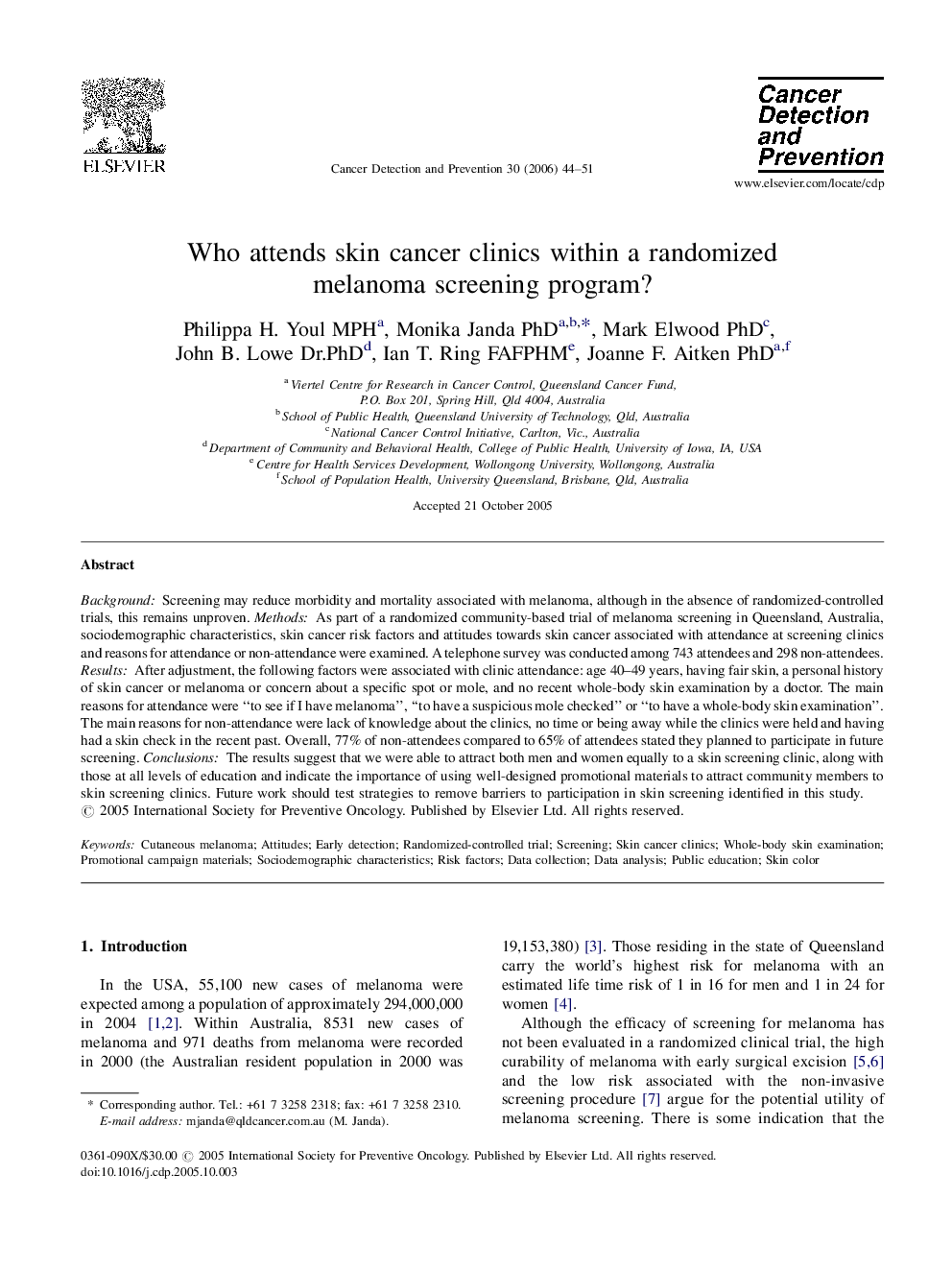| Article ID | Journal | Published Year | Pages | File Type |
|---|---|---|---|---|
| 2108773 | Cancer Detection and Prevention | 2006 | 8 Pages |
Background: Screening may reduce morbidity and mortality associated with melanoma, although in the absence of randomized-controlled trials, this remains unproven. Methods: As part of a randomized community-based trial of melanoma screening in Queensland, Australia, sociodemographic characteristics, skin cancer risk factors and attitudes towards skin cancer associated with attendance at screening clinics and reasons for attendance or non-attendance were examined. A telephone survey was conducted among 743 attendees and 298 non-attendees. Results: After adjustment, the following factors were associated with clinic attendance: age 40–49 years, having fair skin, a personal history of skin cancer or melanoma or concern about a specific spot or mole, and no recent whole-body skin examination by a doctor. The main reasons for attendance were “to see if I have melanoma”, “to have a suspicious mole checked” or “to have a whole-body skin examination”. The main reasons for non-attendance were lack of knowledge about the clinics, no time or being away while the clinics were held and having had a skin check in the recent past. Overall, 77% of non-attendees compared to 65% of attendees stated they planned to participate in future screening. Conclusions: The results suggest that we were able to attract both men and women equally to a skin screening clinic, along with those at all levels of education and indicate the importance of using well-designed promotional materials to attract community members to skin screening clinics. Future work should test strategies to remove barriers to participation in skin screening identified in this study.
